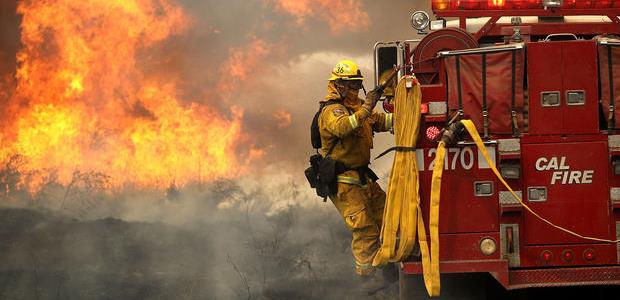
NIOSH Highlights Noise Exposure of Wildland Firefighters
To prevent this population of firefighters from developing hearing loss, the authors recommend enrolling all wildland firefighters in a hearing conservation program and that fire agencies maintain fire service-specific hearing loss prevention programs.
NIOSH's Science Blog hhis week highlighted the risk of hearing loss that faces wildland firefighters, with the article posted by George Broyles, LCDR Corey Butler, and Capt. Chuck Kardous including a chart showing how what percentages of some jobs' exposures exceed the NIOSH REL and the OSHA PEL. (For some, including helicopter pilot and pump operator, the chart indicated 100 percent of the exposures do exceed the REL.)
Noise exposures and hearing loss among structural firefighters have been well documented, but that's not the case with wildland firefighters, they write, even though they may be repeatedly exposed to noise sources such as chainsaws, aircraft, wood chippers, pumps, heavy equipment, and ambient noise from the wildfire itself.
The article discusses a three-year study done by the U.S. Forest Service Technology and Development Program in partnership with NIOSH to measure wildland firefighters' noise exposures during training and fire suppression tasks and to identify jobs that put them at increased risk for hearing loss, with a paper published in 2016 in the Journal of the Acoustical Society of America discussing the results.
Overall, 85 of the 174 measurements were above the NIOSH maximum allowable daily dose, and some firefighters exposed to a TWA of 105-106 dBA would exceed their maximum daily limit in just four to five minutes, and a bulldozer operator exceeded the 100 percent noise dose in 56 seconds. "Bulldozer operators received the highest possible daily noise dose, some exceeding the OSHA maximum daily dose by 20-fold and the NIOSH maximum daily dose by 500-fold," they explain. "It is interesting to note that four of the bulldozer operators had TWAs well below the NIOSH REL, most likely because they operated in a closed or environmental cabs which isolated the bulldozer operator from much of the noise generated from the heavy equipment."
To prevent this population of firefighters from developing hearing loss, they recommend enrolling all wildland firefighters in a hearing conservation program and that fire agencies maintain fire service-specific hearing loss prevention programs.
Broyles is a Fire and Fuels Project Leader with the Technology and Development Program, USDA Forest Service; Butler is an Occupational Safety and Health Specialist with the NIOSH Western States Division; and Kardous is a senior research engineer with the NIOSH Division of Applied Research and Technology.